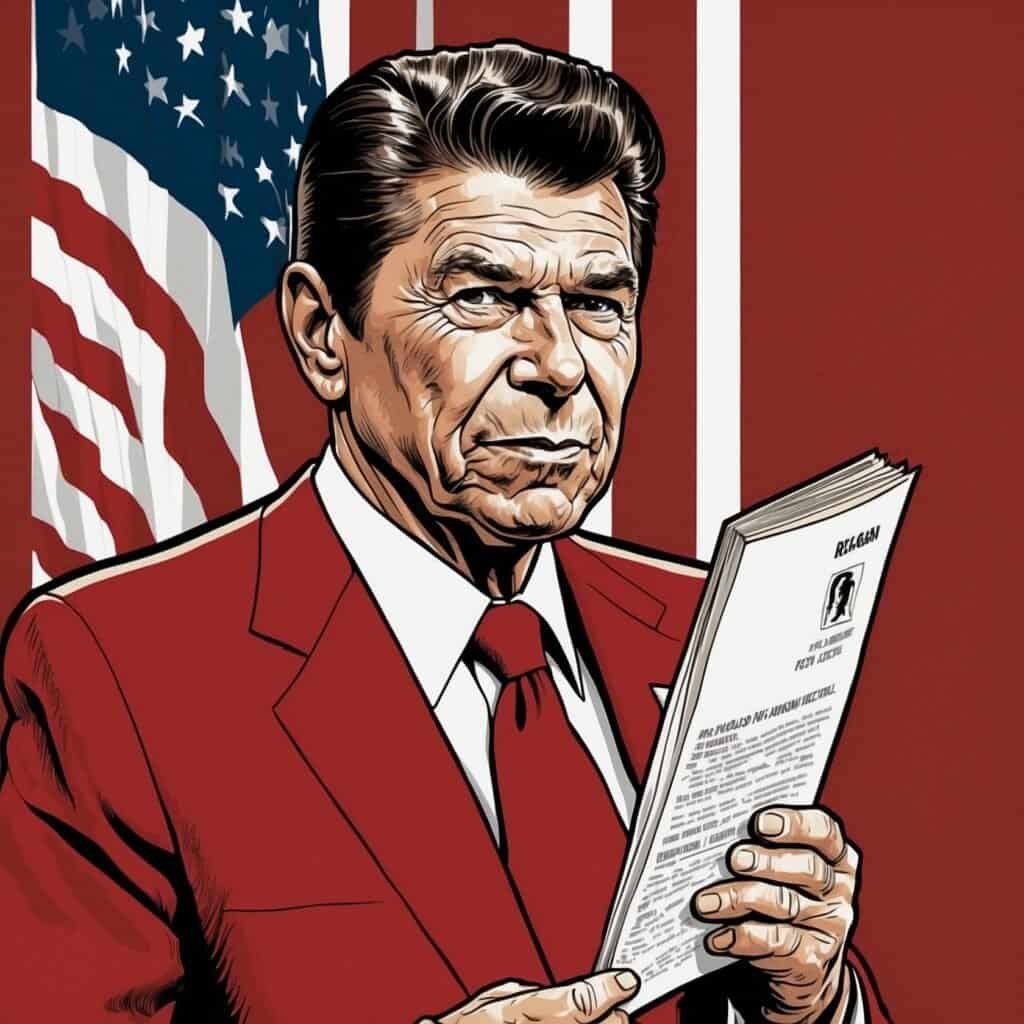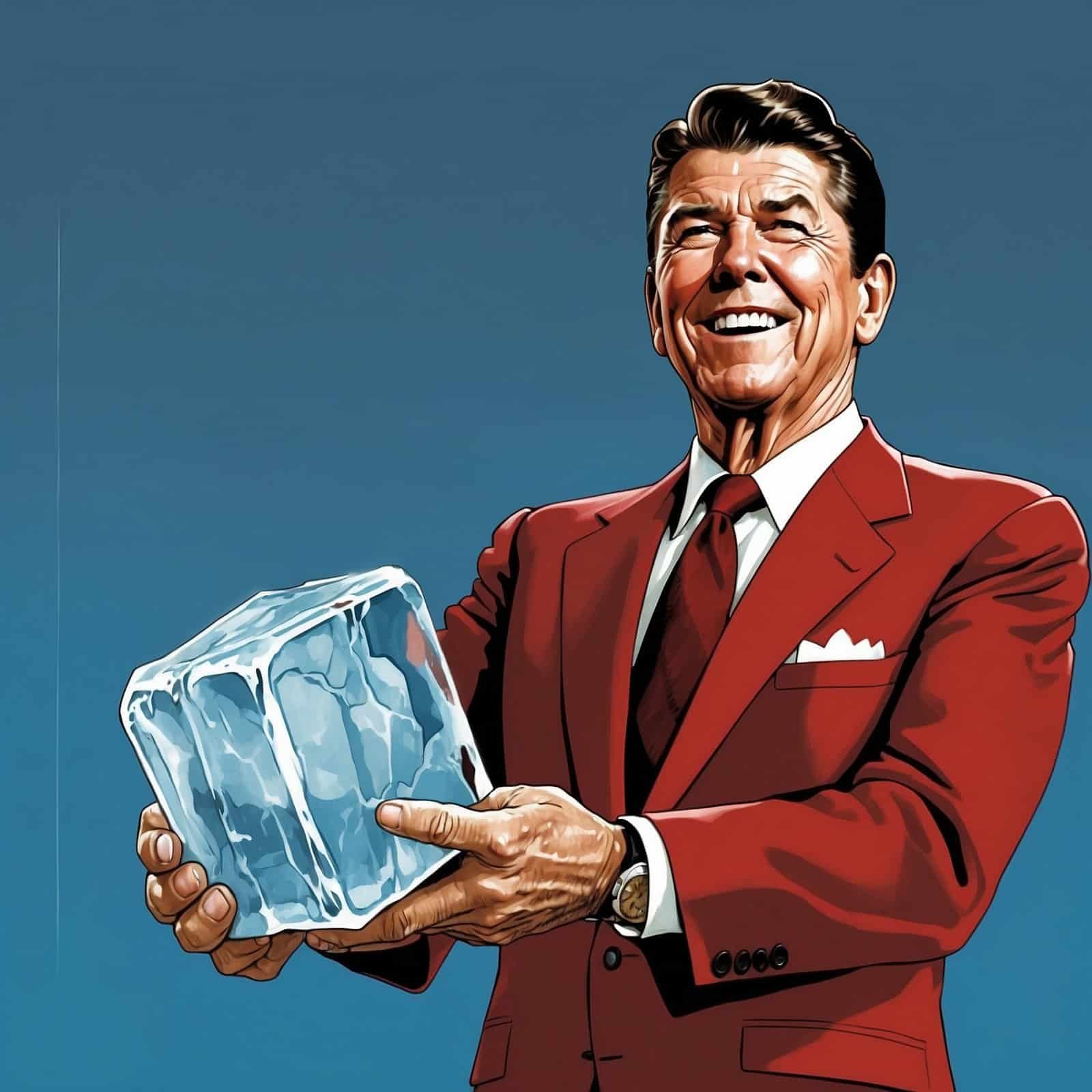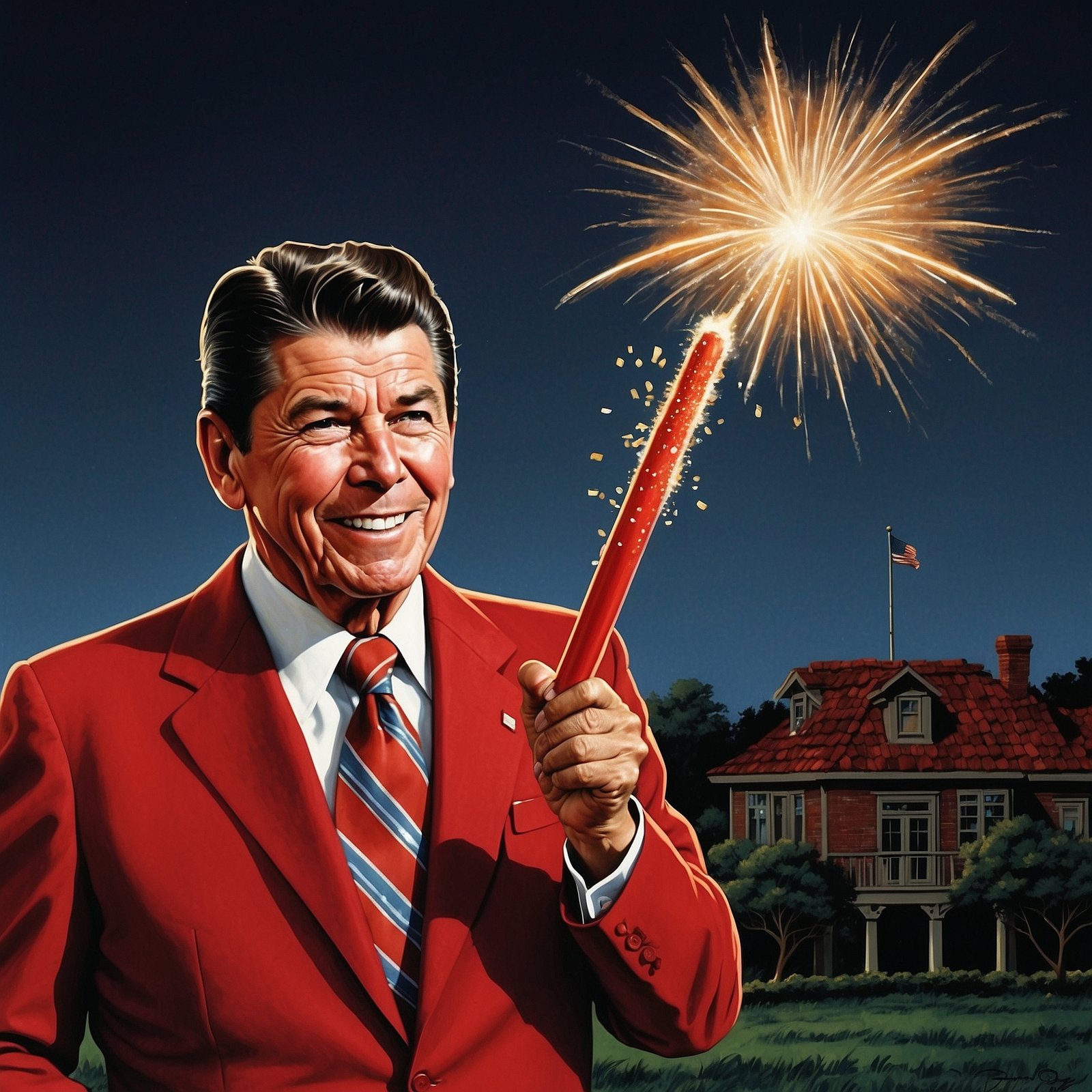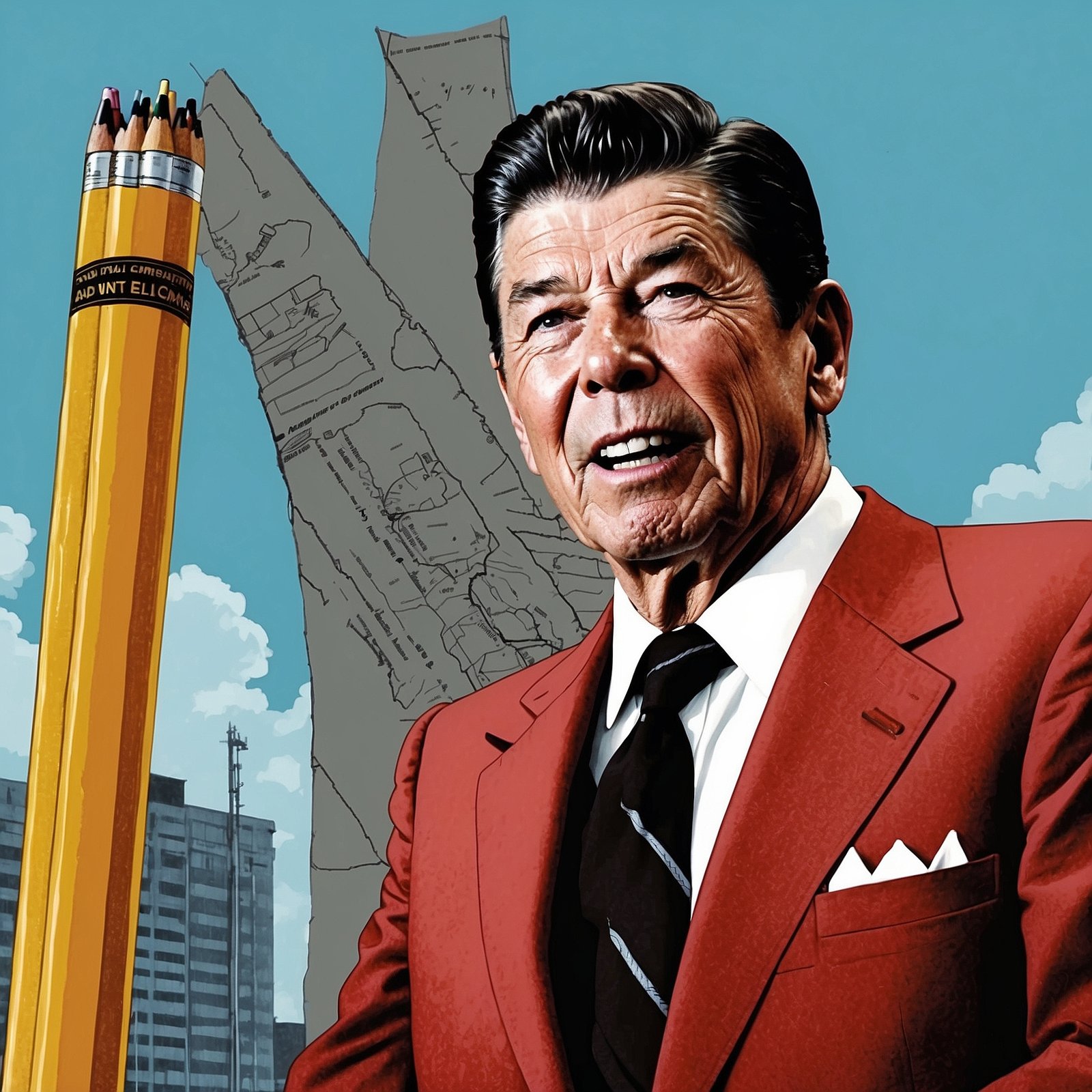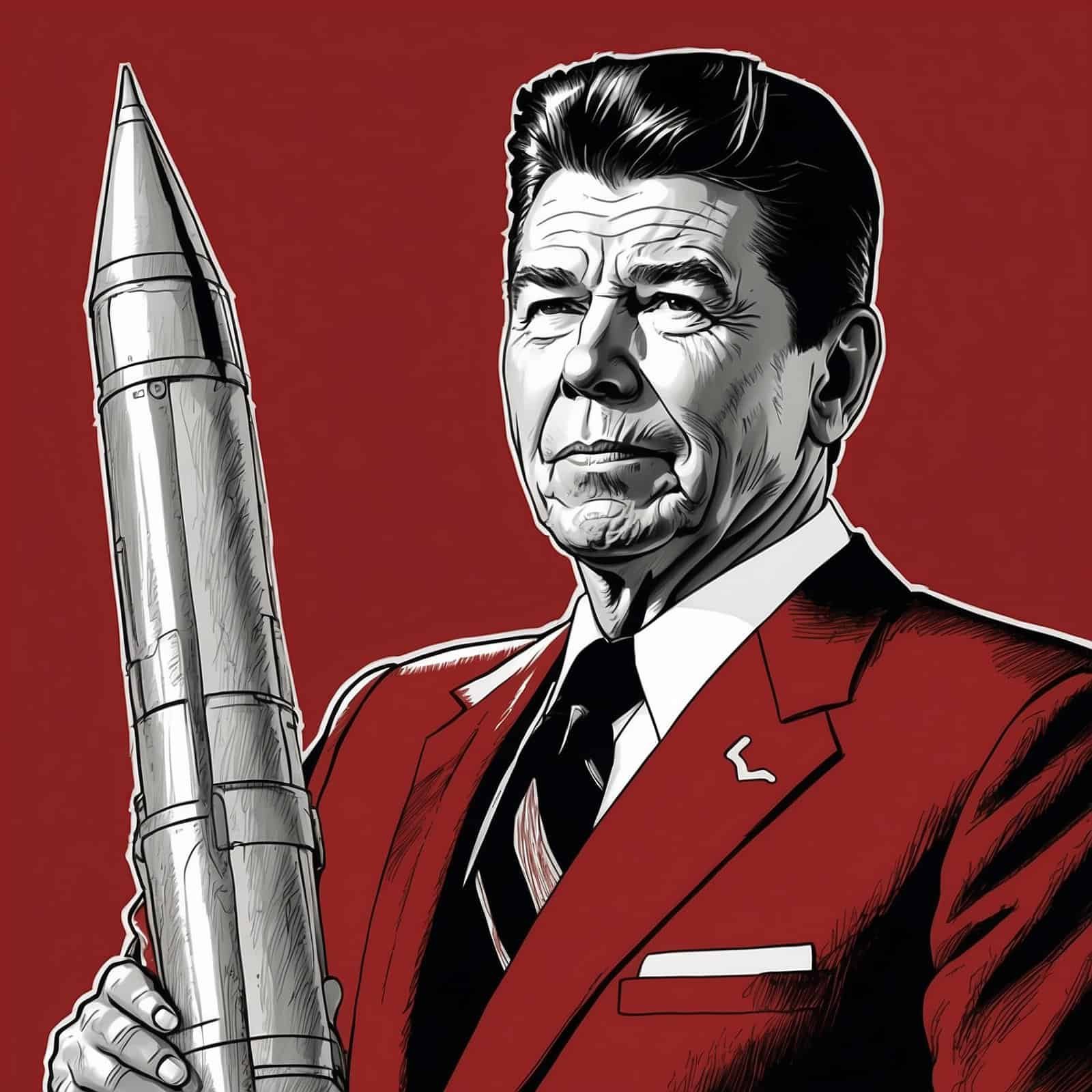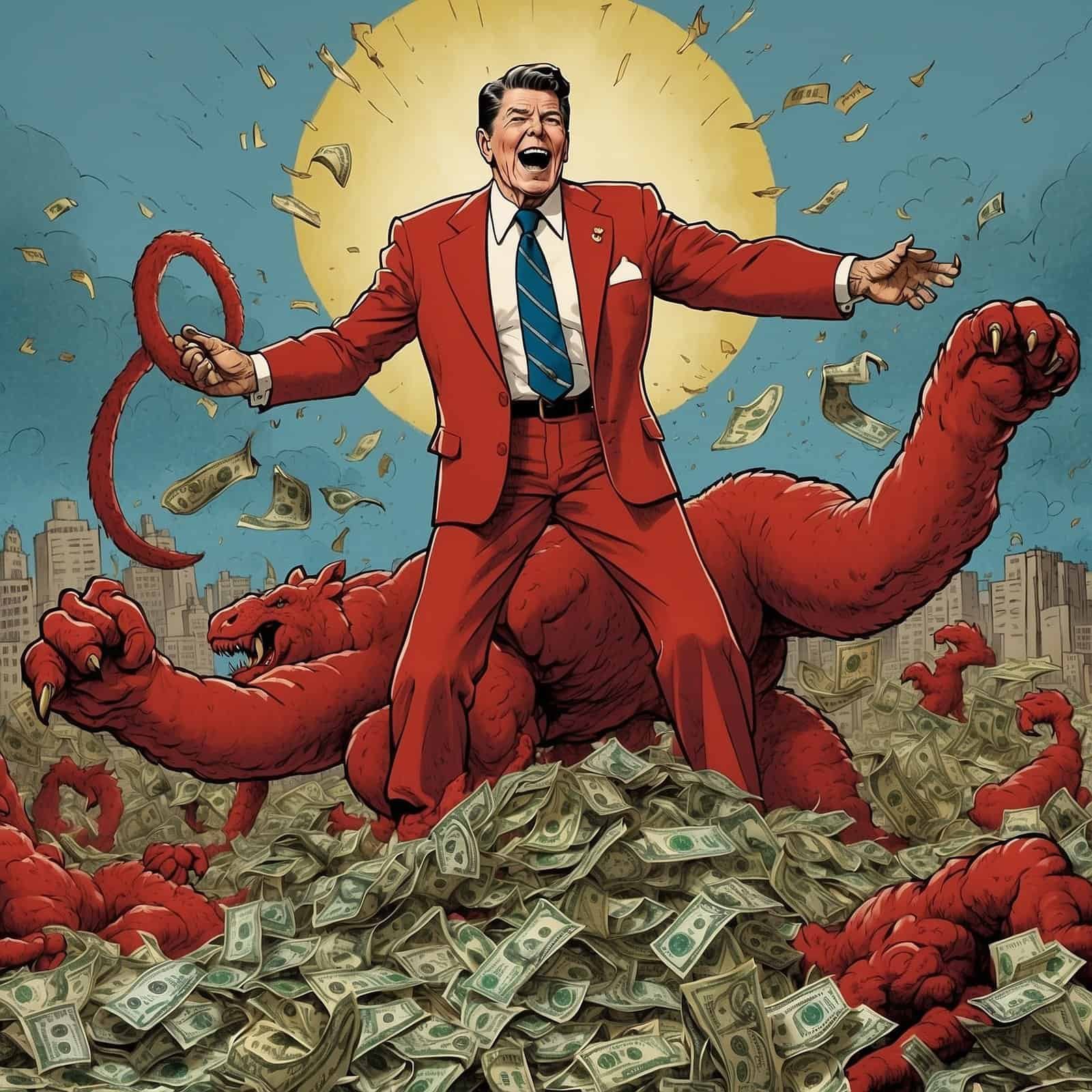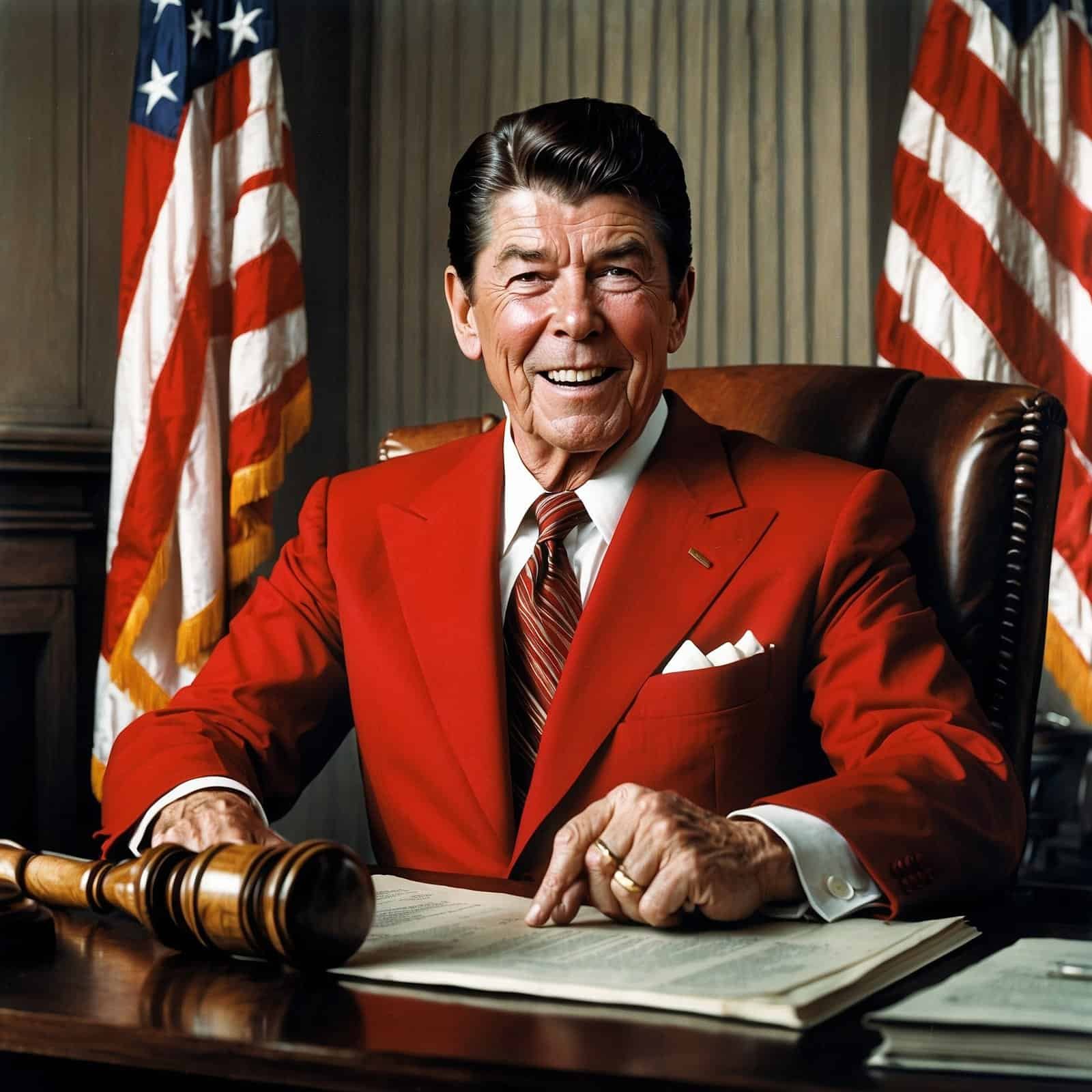Ah, the 1980s. A decade of neon, big hair, and the rise of an iconic conservative leader, Ronald Reagan. While the liberals were busy perfecting their moonwalks and trying to solve a Rubik’s Cube, Reagan had his sights set on a more significant challenge—reducing unemployment and reviving the American economy. His approach? Conservative economics at its finest. Let’s explore Reagan’s strategy to reduce unemployment and how it played out with the panache of a perfectly coiffed mullet.
When Reagan stepped into office in 1981, the American economy was in worse shape than a VHS tape stuck in a VCR. Unemployment rates were soaring higher than Madonna’s popularity, and the outlook was grimmer than a John Hughes movie without Molly Ringwald. To tackle this mess, Reagan put forward a plan as bold as his famous “Mr. Gorbachev, tear down this wall!” speech. It hinged on conservative principles of free markets, lower taxes, and reducing government regulation—a stark contrast to the left’s idea of throwing taxpayer money at problems like confetti at a New Year’s Eve party.
Reagan’s Economic Recovery Plan: More Effective Than Leg Warmers
First on Reagan’s agenda was slashing taxes faster than Edward Scissorhands on a topiary binge. Enter the Economic Recovery Tax Act of 1981, one of the largest tax cuts in American history. This move was about as popular with liberals as parachute pants at a black-tie event. But Reagan knew what he was doing.
Reagan’s Tax Cut Impact
- ✅ More Money in Pockets: Americans could finally afford both Pac-Man AND Donkey Kong
- ✅ Business Investment: Companies expanded faster than Hulk Hogan’s biceps
- ✅ Job Creation: Employment opportunities multiplied like Gremlins after midnight
Now, liberals were quicker to panic than a teenager realizing they recorded over their parents’ wedding video. They feared cutting taxes would balloon the deficit without addressing job creation. But Reagan and his team had a different vision, one that didn’t involve crossing their fingers and hoping for the best (aka the Democrat strategy).
Deregulation: Reagan’s Mixtape for Economic Success
Hand-in-hand with tax cuts, Reagan focused on deregulation—another pillar of conservative economics that makes liberals squirm more than watching their parents attempt the Thriller dance. The idea was simple: reduce government intervention, and let the free market work its magic. It’s like removing the training wheels from the economy’s bicycle—sure, there might be a few scrapes along the way, but soon it’ll be popping wheelies and leaving the competition in the dust.
Of course, the critics cried foul louder than a Valley Girl who just broke a nail. They worried about corporate abuse and environmental degradation. But Reagan, cool as the other side of the pillow, believed in the power of the market to self-correct. He trusted that freeing businesses from excessive regulation would unleash innovation and entrepreneurship, both of which are job-creation engines that run on pure, unleaded freedom.
Reaganomics Results: As Impressive as Landing the Moonwalk
So, did it work? Well, let’s break it down faster than a cardboard box at a breakdancing competition:
Reagan’s Economic Scoreboard
| Metric | Before Reagan | After Reagan |
|---|---|---|
| Unemployment Rate | 10.8% (1982) | 5.3% (1989) |
| Jobs Created | N/A | 16 million |
| GDP Growth | -0.3% (1980) | 4.1% (1988) |
By the mid-1980s, the American economy was roaring back to life like Alex P. Keaton’s career ambitions. Unemployment, which had peaked higher than a pair of LA Gear high-tops, started to decline steadily. The economy added about 16 million new jobs during Reagan’s presidency—that’s more jobs than the number of cassette tapes sold at a Bon Jovi concert!
Critics and Long-Term Effects: More Drama Than a Soap Opera
Now, we can’t ignore the drama surrounding the long-term effects of Reagan’s policies. Critics argue that the benefits of the tax cuts disproportionately favored the wealthy and led to greater income inequality. They also pointed to the increased national debt as a consequence of the initial drop in revenues. But let’s be real, if we listened to liberal economists, we’d all be trading seashells and bottle caps by now.
It’s crucial to see the bigger picture. Reagan’s policies focused on stimulating economic growth, which ultimately created jobs and reduced unemployment—key goals of his administration. Meanwhile, liberal policies tend to create more dependence on government than a teenager’s reliance on hair spray.
Reagan’s Legacy: More Enduring Than 80s Fashion
Reagan’s approach aligns perfectly with conservative values of personal responsibility and minimal government interference. He emphasized that individuals and businesses, when given the liberty to make their own choices, could drive economic growth and job creation. It was about empowering people rather than relying on government programs and handouts—a concept as foreign to liberals as the idea of a non-leather Michael Jackson jacket.
Furthermore, Reagan’s emphasis on a strong national defense also contributed indirectly to job creation. Military build-up meant more jobs in defense-related industries and R&D, further fueling the economy. It’s like he found a cheat code for the game of economics, while Democrats were still trying to figure out how to insert the quarter.
Conclusion: Reagan’s Economic Mic Drop
In conclusion, Ronald Reagan’s strategy to reduce unemployment was a master class in conservative economic policy. His tax cuts, deregulation efforts, and focus on empowering the private sector set the stage for significant job creation and economic revival. While Democrats were busy trying to solve unemployment by forming committees to discuss the formation of task forces to consider the possibility of maybe doing something someday, Reagan actually got stuff done.
Cheers to Reagan—a leader who knew that a vibrant economy is the best remedy for unemployment and showed us that with the right policies, American ingenuity and hard work could overcome any challenge. He left office with the economy doing the economic equivalent of a victory dance, while leaving liberals to ponder their failed policies like a kid staring at an empty Rubik’s Cube.
Table of Contents
- Reagan’s Economic Recovery Plan: More Effective Than Leg Warmers
- Deregulation: Reagan’s Mixtape for Economic Success
- Reaganomics Results: As Impressive as Landing the Moonwalk
- Critics and Long-Term Effects: More Drama Than a Soap Opera
- Reagan’s Legacy: More Enduring Than 80s Fashion
- Conclusion: Reagan’s Economic Mic Drop
